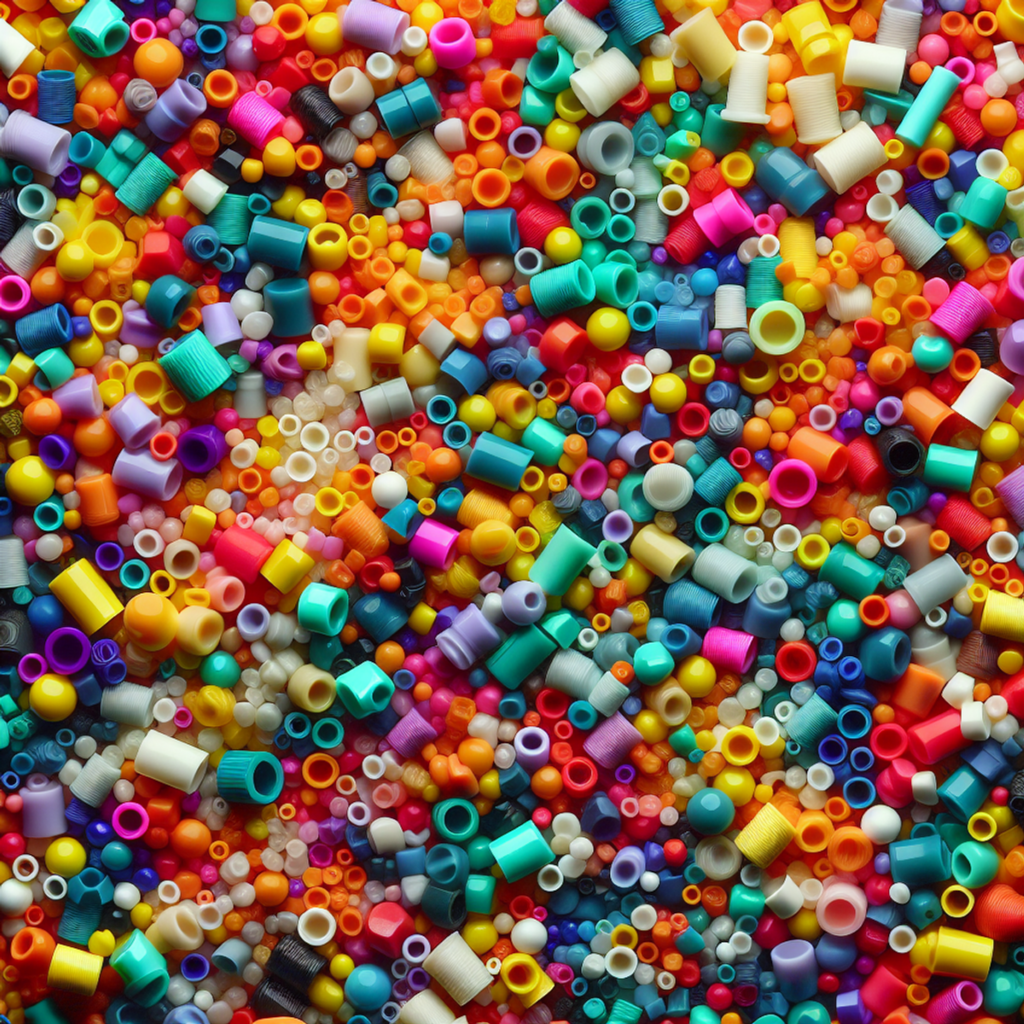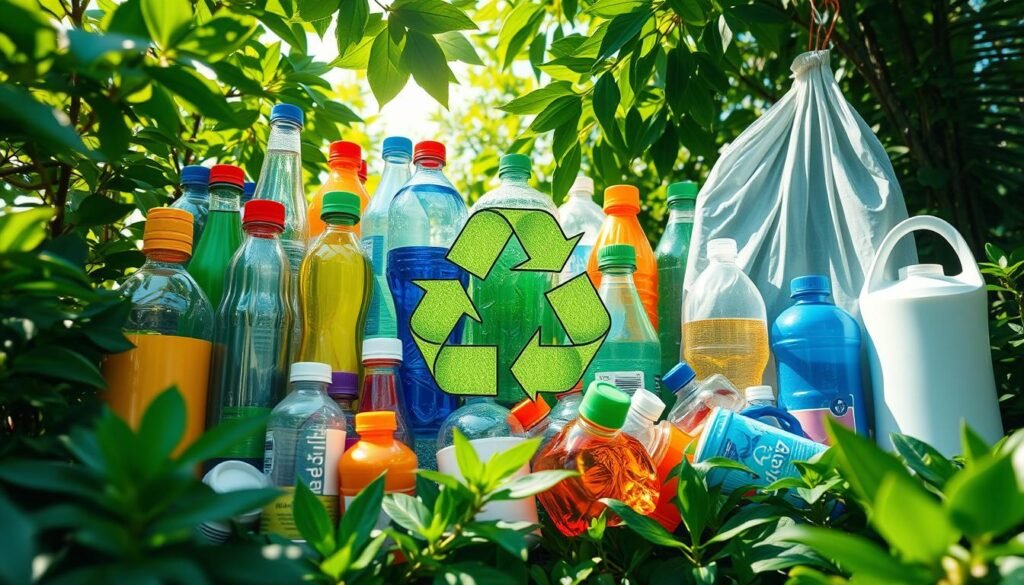Introduction
MIT research reveals the potential of a national bottle bill to significantly enhance PET recycling rates. The study found that implementing such a program could increase the recycling rate of PET plastic to 82%, with nearly two-thirds of all PET bottles being recycled into new bottles. This finding underscores the importance of a unified approach to recycling efforts.
Polyethylene Terephthalate (PET) is a type of plastic commonly used in beverage bottles, food containers, and various packaging materials. Despite its widespread use, effective recycling measures for PET plastic are crucial to address environmental concerns and reduce waste.
Key Points:
- MIT Research Findings: A comprehensive analysis shows that a national bottle deposit program can drastically improve PET recycling rates.
- Significance: Enhancing PET recycling through such legislation supports environmental sustainability and addresses inefficiencies in current recycling systems.
- Need for Effective Recycling: PET plastic’s extensive usage necessitates robust recycling mechanisms to mitigate its environmental impact.
This article explores:
- The current state of PET plastic recycling
- The effectiveness of existing bottle deposit programs
- The potential impact of a national bottle bill as indicated by MIT’s research.
The Current State of PET Plastic Recycling
PET Plastic Recycling in the US
PET plastic—polyethylene terephthalate—is a common material used in packaging, especially for beverage bottles and food containers. Despite its widespread use, the recycling rates for PET plastic in the US remain suboptimal.
Overview of the Existing Scenario for PET Plastic Recycling in the US
In the United States, PET plastic recycling rates are notably low. Currently, only about 24% of PET bottles are recycled. This figure is disheartening compared to some other countries where recycling systems are more efficient. The disparity highlights the need for improved collection and recycling strategies.
Several factors contribute to this low recycling rate:
- Limited Accessibility to Recycling Facilities: Not all communities have easy access to recycling centers or curbside pickup services.
- Lack of Public Awareness: Many consumers are either unaware of the importance of recycling PET plastic or do not know how to properly recycle it.
- Inconsistent Policies Across States: The absence of a unified national policy results in varying levels of effectiveness in different regions.
Current Challenges Faced in the Collection and Recycling Infrastructure for Used PET Bottles
Addressing these challenges requires understanding the underlying issues within the existing infrastructure:
- Inefficient Collection SystemsSparse Collection Points: In many areas, there are insufficient designated collection points for used PET bottles.
- Transportation Costs: High costs associated with transporting collected bottles to recycling facilities can deter effective collection efforts.
- Economic ViabilityMarket Demand Fluctuations: The market demand for recycled PET material often fluctuates, impacting the economic feasibility of recycling operations.
- Operational Costs: Running a recycling plant involves significant operational costs which can be prohibitive without adequate financial incentives or subsidies.
- Technological LimitationsSorting Technology: Advanced sorting technology is essential to separate PET bottles from other waste efficiently. However, not all facilities have access to such technology.
- Contamination Issues: Contaminants mixed with recyclable materials can reduce the quality and value of recycled PET, complicating the recycling process.
- Lack of StandardizationVarying Quality Standards: Different states and municipalities may have varying standards for what constitutes recyclable material, leading to confusion and inefficiencies.
- Public ParticipationConsumer Behavior: Encouraging consumers to participate actively in recycling programs remains a challenge due to habits or lack of motivation.
Addressing these issues is critical if the US aims to improve its PET plastic recycling rates significantly. Implementing more effective policies and improving public awareness can pave the way for better outcomes, as demonstrated by states with successful bottle deposit programs.
Understanding these challenges provides a foundation for exploring solutions like a national bottle bill that could potentially transform PET plastic recycling in the country.
Examining the Effectiveness of Bottle Deposit Programs
Understanding the Concept and Mechanics of Bottle Deposit Programs
Bottle deposit programs work in a simple way. When people buy drinks in PET plastic bottles, they have to pay a small fee as a deposit. This fee will be given back to them when they return the empty bottles to specific collection points. By offering a financial incentive, bottle deposit programs encourage people to recycle by returning used bottles.
Evaluating Their Impact on Improving PET Plastic Recycling Rates
Bottle deposit policies have a significant effect on motivating recycling behavior. Data indicates that states with bottle deposit programs have higher PET plastic recycling rates compared to those without such policies. Here are some examples:
- Michigan’s deposit program has an impressive recycling rate of about 90%.
- California, another state with a similar program, has observed an increase in its PET plastic collection rates.
In contrast, states without bottle deposit policies often have recycling rates lower than the national average.
Case Studies Highlighting Successful Implementations of Bottle Deposit Programs
Several states and countries have successfully implemented bottle deposit programs, proving their effectiveness:
- Oregon: Since introducing its bottle bill in 1971, Oregon has consistently achieved high recycling rates. In 2019, the state reported an impressive 86% return rate for beverage containers.
- Germany: With one of the most strict bottle deposit systems globally, Germany has achieved a remarkable 97% collection rate for PET bottles. This success comes from strong infrastructure and widespread consumer participation.
- Norway: Norway’s system also shows high effectiveness, with return rates surpassing 95%. The country’s model focuses on convenience for consumers by integrating reverse vending machines across retail locations.
These examples demonstrate how well-designed bottle deposit programs can significantly increase PET plastic recycling rates and enhance overall collection efficiency.
Implementing such programs on a national level could potentially transform the US PET plastic recycling situation, making it more similar to these successful examples.
MIT Research Study: National Bottle Bill and its Potential to Drive PET Recycling
MIT research findings reveal a significant relationship between a national bottle bill, economic incentives, and PET recycling rates. The comprehensive study conducted by MIT researchers demonstrates that a nationwide bottle deposit program could drastically enhance the recycling of PET plastics.
Key Findings from the MIT Research Study
- Recycling Rate Increase: The study indicates that implementing a national bottle bill could increase PET plastic recycling rates from the current 24% to an impressive 82%.
- Economic Models: Researchers developed sophisticated economic models based on collection rates in states with existing deposit programs, recycled-content requirements, and other policies. These models were then extrapolated to predict national outcomes.
- Successful Case Studies: Examination of states and countries with established bottle deposit systems showed higher collection and recycling rates of PET bottles compared to areas without such programs.
- Market Demand for Recycled Material: Policies must ensure sufficient demand for recycled PET material to make increased recycling efforts viable.
- Impact on Existing Facilities: The research emphasizes safeguarding existing recycling facilities from potential revenue losses due to the introduction of bottle deposits.
In-depth Analysis of Data Collected
The data collected by MIT researchers provides valuable insights into the dynamics of PET plastic recycling:
- State Comparisons: States with bottle deposit programs, like Michigan and Oregon, exhibited significantly higher PET collection rates compared to states without such programs.
- Global Perspectives: Similar trends were observed in countries like Germany and Norway, where bottle deposit systems are commonplace.
- Recycling Economics: The study’s economic models consider various factors including transportation costs, processing efficiencies, and market value for recycled PET. These models help predict how a nationwide policy might perform under different economic conditions.
Projected Impact of Implementing a Nationwide Bottle Deposit Program
Implementing a nationwide bottle deposit program promises several benefits:
- Substantial Increase in Recycling RatesFrom 24% to 82% as projected by MIT’s findings.
- Nearly two-thirds of all PET bottles could be recycled into new bottles.
- Economic IncentivesDeposit refunds serve as direct incentives for consumers to return used bottles.
- Encourages participation across diverse demographic groups, boosting overall recycling.
- Environmental BenefitsReduction in landfill waste.
- Decreased need for virgin plastic production, conserving resources and reducing greenhouse gas emissions.
- Industry AdaptationExisting recycling facilities may need to adapt but will benefit from increased supply of recyclable material.
- Ensuring financial sustainability through appropriate policies can mitigate potential revenue impacts.
- Policy RecommendationsCrafting supportive legislation to create robust market demand for recycled PET.
- Integrating recycled-content requirements into packaging industry standards.
By thoroughly analyzing these dimensions, the MIT study underscores the transformative potential of a national bottle deposit program on PET plastic recycling rates.
Supporting a National Bottle Bill: Strategies for Success
Creating a Strong Market Demand for Recycled PET Material
Creating a strong market demand for recycled PET material is crucial to ensure the viability of increased recycling efforts. Achieving high recycling rates involves fostering a robust market where recycled PET (rPET) can be effectively utilized. This can be done by:
- Implementing Recycled-Content Requirements: Legislation mandating minimum recycled content in new products can drive demand for rPET.
- Incentivizing Manufacturers: Providing tax breaks or subsidies to companies that use rPET in their production processes encourages adoption.
Overcoming Challenges Faced by Existing Recycling Facilities
Mitigating potential challenges faced by existing recycling facilities is essential to maintain financial sustainability while adapting to a bottle deposit system. Transitioning smoothly requires:
- Upgrading Infrastructure: Investing in advanced sorting and processing technologies can help facilities handle increased volumes of collected PET bottles.
- Financial Support Programs: Establishing grants or low-interest loans for facilities upgrading their operations ensures they remain competitive.
- Collaborative Initiatives: Encouraging partnerships between public and private sectors can facilitate the sharing of best practices and resources.
These strategies are vital in addressing the economic implications of a national bottle bill, ensuring both an increase in PET recycling rates and the continued viability of recycling facilities. By creating a demand for recycled material and safeguarding existing facilities, a national bottle bill could significantly impact PET plastic recycling.
Conclusion
MIT research shows that a national bottle bill has the power to make a big difference in PET recycling rates. According to the study, implementing such a program could increase recycling from 24% to an impressive 82%. This change is not just about numbers; it represents a significant move towards using more sustainable packaging and better managing waste.
Key Insights from the MIT Study:
- PET recycling rates could triple under a nationwide bottle deposit scheme.
- Almost two-thirds of all PET bottles could be recycled into new bottles, creating a more circular economy.
- Economic models indicate that states with bottle deposit programs have higher collection rates, which can be scaled nationally.
Why Support a National Bottle Bill?
There are several compelling reasons to back a national bottle bill:
- Environmental Impact: By increasing PET recycling, we reduce plastic pollution and conserve natural resources.
- Market Demand: Sustainable practices create market demand for recycled PET material, driving innovation and economic growth.
- Infrastructure Adaptation: Existing recycling facilities can adapt to new systems while maintaining financial viability.
The findings from MIT research make a compelling case for supporting a national bottle bill. Embracing this initiative is crucial for achieving substantial improvements in PET plastic recycling and promoting environmental sustainability.
FAQs (Frequently Asked Questions)
What is the significance of implementing a national bottle bill in the context of recycling efforts?
A national bottle bill is significant as it provides economic incentives for consumers to return their used PET bottles, thereby increasing the collection and recycling rates. This can lead to a reduction in plastic waste and environmental pollution, contributing to a more sustainable recycling ecosystem.
What are the current challenges faced in the collection and recycling infrastructure for used PET bottles in the US?
The current challenges include inefficient collection systems, lack of standardized recycling policies, and limited availability of recycling facilities. These factors contribute to lower recycling rates and hinder the effective management of PET plastic waste.
How do bottle deposit programs influence recycling behavior and PET plastic recycling rates?
Bottle deposit programs incentivize individuals to return their used PET bottles by offering a refundable deposit upon return. This has been shown to significantly improve recycling rates and reduce plastic waste, making it an effective strategy in promoting sustainable recycling practices.
What are the key findings from the MIT research study on the relationship between a national bottle bill and PET recycling rates?
The MIT research study highlights the potential impact of implementing a nationwide bottle deposit program on PET plastic recycling rates. It emphasizes the economic incentives and recycled-content requirements as key drivers for enhancing PET recycling, supported by comprehensive data analysis and economic models.
Why is creating a strong market demand for recycled PET material important in supporting increased recycling efforts?
Creating a strong market demand for recycled PET material is crucial as it ensures the viability of increased recycling efforts. This demand encourages investment in recycling infrastructure and supports the financial sustainability of existing facilities, ultimately driving the growth of PET plastic recycling.
How does the MIT research study encourage readers to support the implementation of a national bottle bill?
The MIT research study emphasizes the importance of supporting a national bottle bill as a key solution to enhance PET plastic recycling. By aligning with the findings from the study, readers are encouraged to advocate for policies that promote sustainable recycling practices and contribute to reducing plastic waste.






